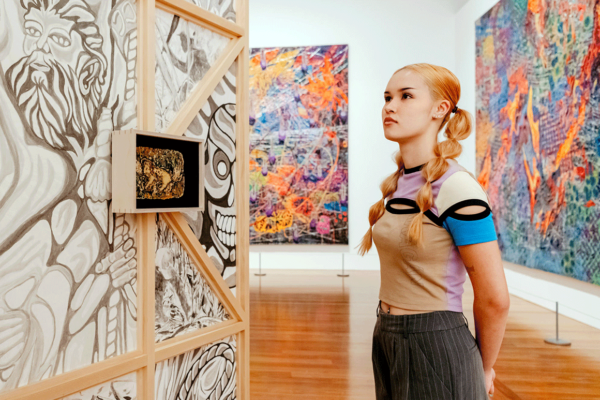- What We Do
- Understanding your audience
- Engaging new audiences
- Designing experiences
- Building loyalty

Best practices for conducting research with young people
Many of our clients are looking to work with young people to develop and improve a variety of experiences and offers. But how do you connect with and understand this cohort? Here are four things we’ve learned as an organisation when it comes to running research projects with young people.
- ‘Young people’ encompasses many different life stages
It’s important to remember that ‘young people’ covers groups of people at many different ages and life stages.
We recently completed a project working with young people aged 16-25. This age range encompasses: school pupils, those studying at sixth form or college, university students and those in full-time work, amongst others.
When working across such a diverse group, it’s crucial to offer as much flexibility as possible to account for varying availabilities and schedules. In the past, for example, we’ve set up polls allowing those taking part in research to register their preferred dates and times to attend a focus group or forum, rather than deciding specific dates beforehand.
Of course, it might not always be possible to cater to everyone’s individual schedules (especially on projects involving many participants), but allowing this degree of flexibility will help young people plan taking part in the research around their busy lives.
- Consistency helps cultivate a comfortable research environment
On projects with multiple elements, consistency can help create a safe space for participants to share honestly.
Ensuring that the moderator remains the same throughout the different methodologies, and that the groups themselves are made up of the same young people can help those taking part to feel comfortable with each other, increasing the likelihood that they’ll feel able to share and give honest feedback.
Ensuring participants are of a similar age to one another may also help create connections and rapport through shared experience.
- Chat functions and WhatsApp groups can be effective (with the right permissions in place)
Using online chat groups or setting up WhatsApp groups as part of projects with young people can be really effective. Using systems participants are already familiar with helps create feelings of ease; we’re meeting young people where they already are.
Using WhatsApp or another online chat system also removes the need to be on a video call (which can make some feel nervous to speak up and share their thoughts) and allows young people to answer prompts in their own time, further increasing the flexibility built into the research.
However, it’s important that the right permissions are in place in order for these groups to be safe for young people to join, and for the research to adhere to MRS standards. If conducting a WhatsApp group as part of a research project, or using this platform to reach out to participants, ensure a detailed consent form is in place, which includes:
- Assurances that this element of the project (if one of several methodologies used) is optional as personal phone numbers will be visible to other participants – always give the option to opt out
- A reminder to participants not to share any personal information within the groups
- An outline of the rules of engagement (for example, no posting of any content which could be considered offensive, treating other participants with respect)
- Links to WhatsApp’s privacy policy, as well as that of your organisation
- Advice on how to block WhatsApp numbers if needed
- Foster feelings of ownership through encouraging active contributions
Ensuring young people feel like active contributors in the research, rather than passive participants can help foster feelings of ownership and greater engagement and prevent ‘switching off’.
On past projects, we have achieved this sense of ownership among young people using a variety of methods:
- Planning interactive activities rather than lengthy spells of discussion; this helps everyone to focus and truly take part. Activities where young people work in pairs to create something before feeding back to the wider group can be particularly effective.
- Using relatable, ‘human’ language – research jargon won’t connect or prompt engagement
- Involving young people as ‘peer researchers’. Peer research uses researchers of
a similar age and background to those being researched to overcome barriers that might arise due to perceived power imbalances between the young people involved in the study and older / professional researchers. Talking to other young people can create a more empathetic environment for discussion due to a greater likelihood of common ground through insider knowledge and shared experience.
If your organisation has an upcoming research project centred on young people and you’d like to get in touch, please contact roisin.coleman@mhminsight.com
Related content
Learn moreEngaging younger audiences
How do we engage younger audiences? This is a question organisations often ask themselves – and don’t always arrive at a clear answer. In the first of our three part series, our consultant, Laura Karban, draws on our research to unpack ways to understand this cohort – and, crucially, how to connect with and engage them.
Learn moreReversing a decline in younger visitors at QAGOMA
When our Visitor 360° research uncovered a decline in visitation among 18-24 year olds at the Queensland Art Gallery and Gallery of Modern Art, they asked us to focus our research on helping them reactivate this cohort. Find out how Culture Segments proved key to identifying ways to reach this age group, and how QAGOMA used research insights proactively to target and rebuild this audience.
Learn moreHeritage and cultural projects: demonstrating impact with young people
In 2021 the NLHF published guidelines on its funding priorities for the forthcoming year. In response, MHM's Research Manager Jenny Merry has shared our top tips for evaluating impact for a successful project proposal.
- Engaging new audiences
- Understanding your audience


